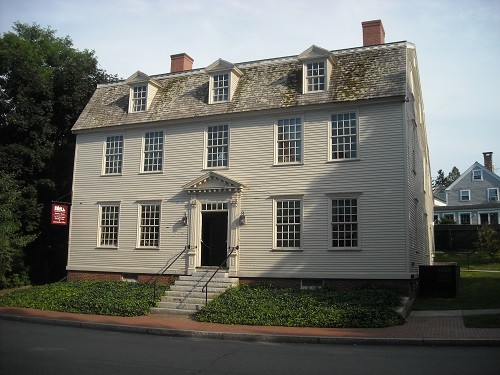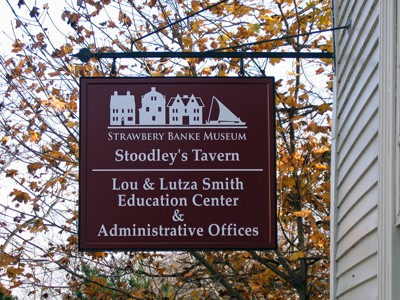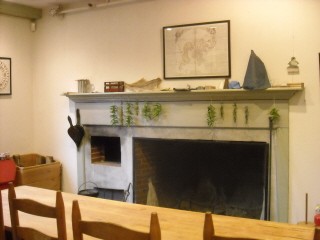Stoodley's Tavern
Introduction
Text-to-speech Audio
Images
Street view of Stoodley's Tavern

Hanging sign outside of entrance

Tavern interior Hearth Room

Backstory and Context
Text-to-speech Audio
Built in 1761, this building originally served as a tavern and home to James and Elizabeth Stoodley and their children, along with two slaves whom they called Frank and Flora. James served in the English army as a ranger of major Robert Rogers unit during the French and Indian War, fighting against the First Nations. He would go on to side with the Revolutionaries. During this time, James owned a tavern called King’s Arms located on State Street that was constructed around 1753. In 1761, the King’s Arms burned down and James then built the new building that stands today.
While being a home to James Stoodley and his family, the tavern was also host to many community events. Local Masons would gather here periodically. James would host auctions at his tavern often for bulk goods including rum and cotton. African slaves were occasionally auctioned as well.
During the 1770s, the tavern was a popular meeting place for the Revolutionary patriots of Portsmouth. Paul Revere visited the town of Portsmouth in December of 1774 and delivered a warning at Stoodley’s tavern to announce the imminent arrival of British soldiers who seek to secure weapons at Fort William and Mary. Revere’s warning was successful as local troops stormed and seized the fort, confiscating the weapons.
James Stoodley passed away in 1779, leaving the tavern to his wife, Elizabeth. She remarried and boarded tenants in the building. James’s daughter, who’s also named Elizabeth, and her husband Elijah Hall inherited and occupied the tavern in 1786. With the death of Elijah in 1830, the building turned into a boardinghouse. It would also be converted into a restaurant, appliance store, and apartment building. It was relocated from Daniel street to its current address on Hancock street by the Strawbery Banke Museum in 1966. The historic building is now an exhibit of the Strawbery Banke Museum.Sources
Robinson, J. D. (n.d.). Stoodley's Tavern Moves On. Retrieved from http://www.seacoastnh.com/Places-and-Events/Historic-Portsmouth/stoodleys-tavern-moves-on/
Stoodley's Tavern -- Strawbery Banke Education Center and Offices. (n.d.). Retrieved from http://www.strawberybanke.org/houses/stoodleys.cfm
